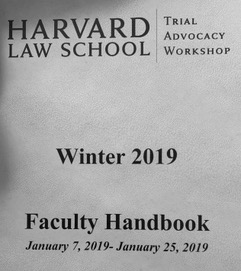Queens Robber Accidentally Shoots His Own Accomplice

An attempted daytime robbery ended very, very badly for a 24-year-old accomplice after his partner shot him in the head.
24-year-old Tyrell Simms, and his armed and unnamed accomplice, targeted a 38-year-old man near the corner of Tuskegee Airmen Way and 160th Street. A scuffle ensued and during the melee, the accomplice shot Simms in the head. First responders rushed Simms, who had been living at a Cypress Hills homeless shelter, to a local hospital. Doctors tried to revive him, but he did not survive.
Simms’ accomplice fled the scene, but officers apprehended him some time later. They recovered the gun and took the man into custody.
The Felony Murder Rule
Typically, intent largely determines the nature of the charges in homicide cases. There are basically four different levels of homicide in New York:
- First Degree Murder: The most serious charges apply for killings with malice aforethought. If Bill grabs a gun, hides in the bushes, waits for Ted to come home, and shoots him, Bill is probably guilty of first degree murder.
- Second Degree Murder: These killings are malicious, but there is no malice aforethought. If Bill and Ted get into an argument and Bill shoots Ted on the spot, second degree murder charges probably apply.
- First Degree Manslaughter: Bill may be guilty of first degree manslaughter if he waved a gun at Ted and the gun went off accidentally. Bill’s conduct was clearly reckless in that situation.
- Second Degree Manslaughter: These killings are accidental killings. If Bill shoves Ted in the dark and Ted falls off a cliff, Bill is probably guilty of second degree manslaughter.
So, under normal circumstances, the shooter in the above story would probably be guilty of first degree manslaughter, at worst.
But if the killing occurred during the commission of a felony, such as armed robbery, the felony murder rule applies. This rule is highly controversial, because intent is irrelevant. So a person who did not intend to commit a murder, can easily be convicted of a crime that can carry a life sentence in some states, even though they never intended to harm a person.
The felony murder rule rests on a doctrine called transferred intent. For example, in the above story, the theory is that the robber planned to shoot the robbery victim. That’s some form of murder, probably first degree murder. The robber did shoot someone. It was just a different person. Therefore, the same level of intent applies.
Accomplice Liability in New York
Incidents like the one above often give rise to the accomplice liability rule as well. As in other areas of life, criminal acts usually involve leaders and followers. The followers have the same criminal liability as the leaders if:
- A crime was actually committed,
- The defendant counseled, commanded, aided, or encouraged the other person, and
- The defendant had the proper mental state at the time, which is usually knowing counselling, commanding, aiding, or encouraging.
Special rules apply if the accomplice was part of a street gang. New York and many other jurisdictions have tougher laws in these situations.
There are some differences between complicity and conspiracy. People are complicit in criminal acts and conspire to commit future crimes. So, conspirators may be criminally liable even if they do not follow through with the crime. That’s not the case with accomplice liability.
Resource:
nydailynews.com/new-york/nyc-crime/ny-queens-robber-fatally-shoots-accomplice-20191002-fv4g2yldw5edpk2deugcklahke-story.html












